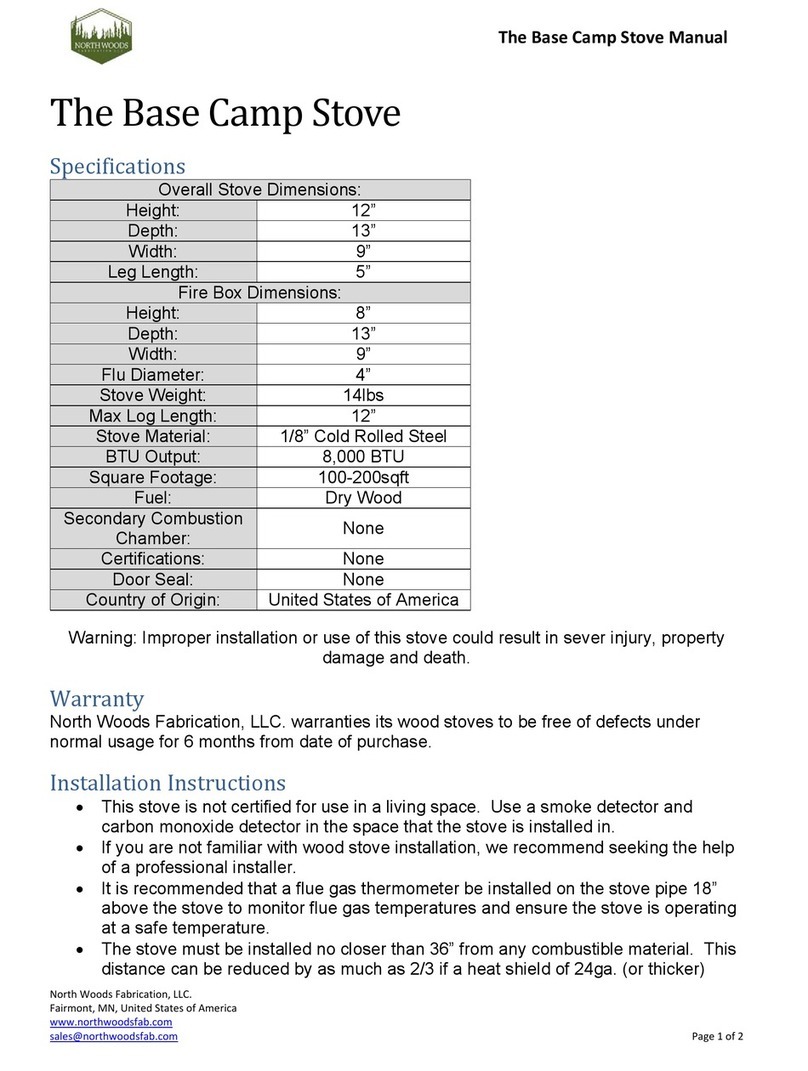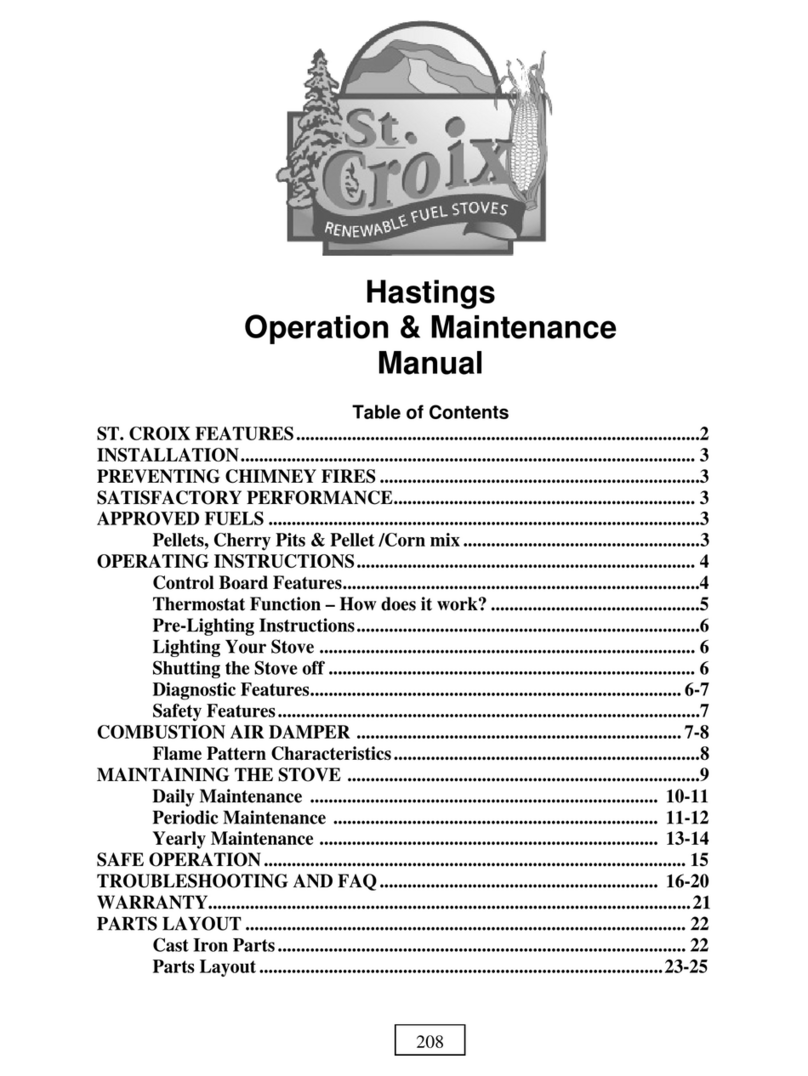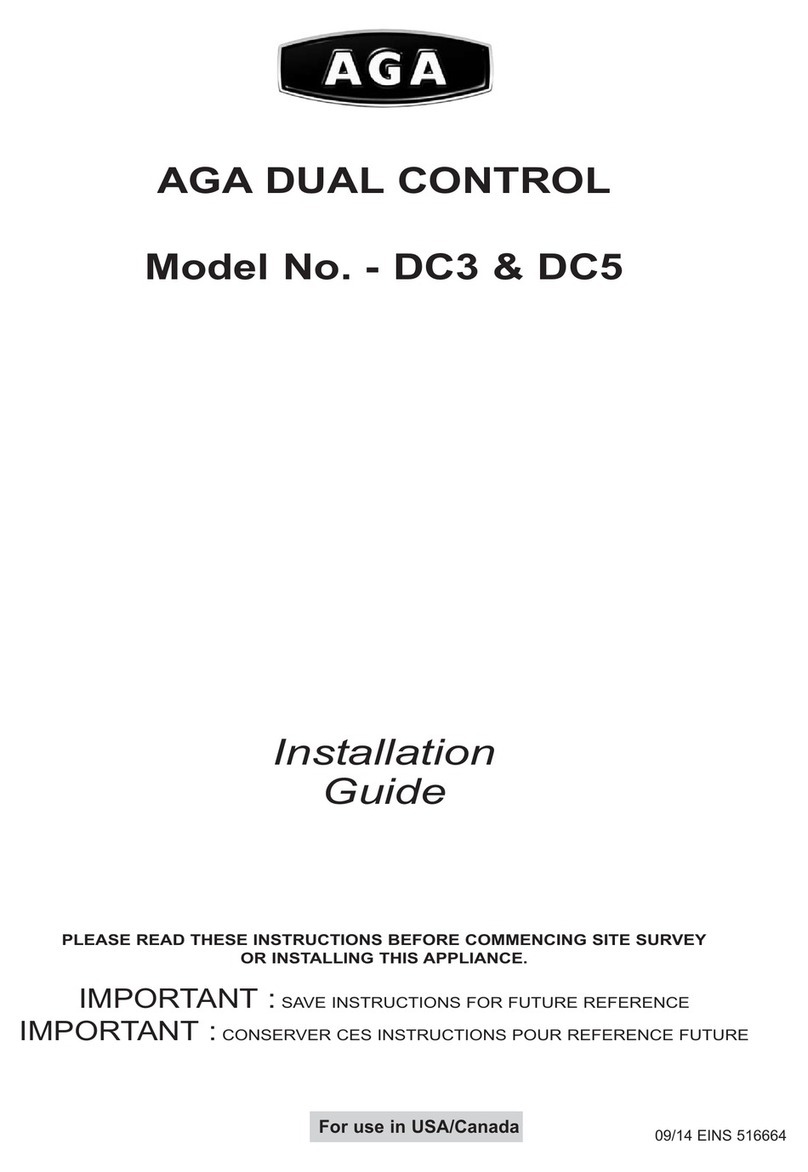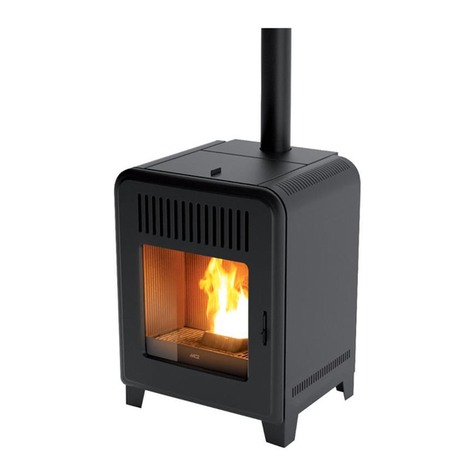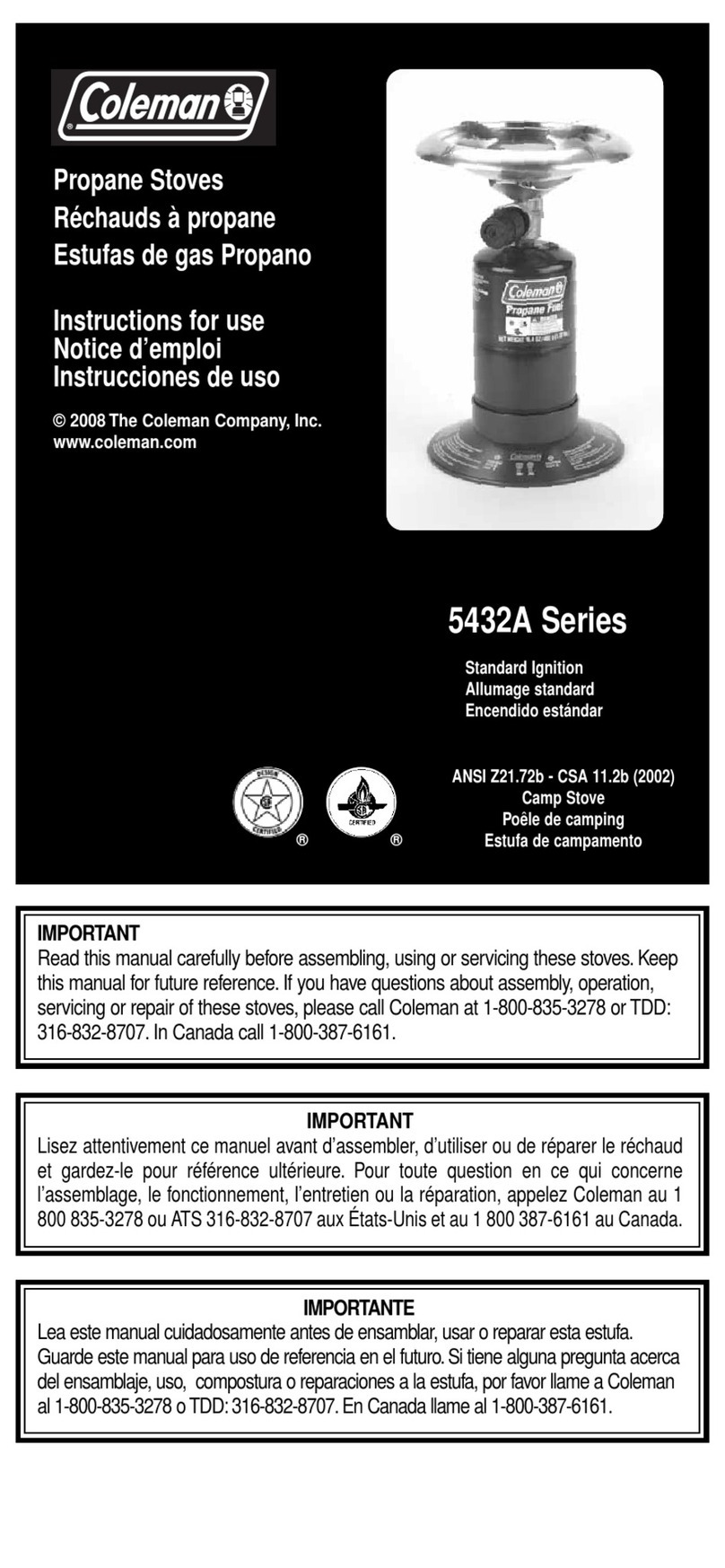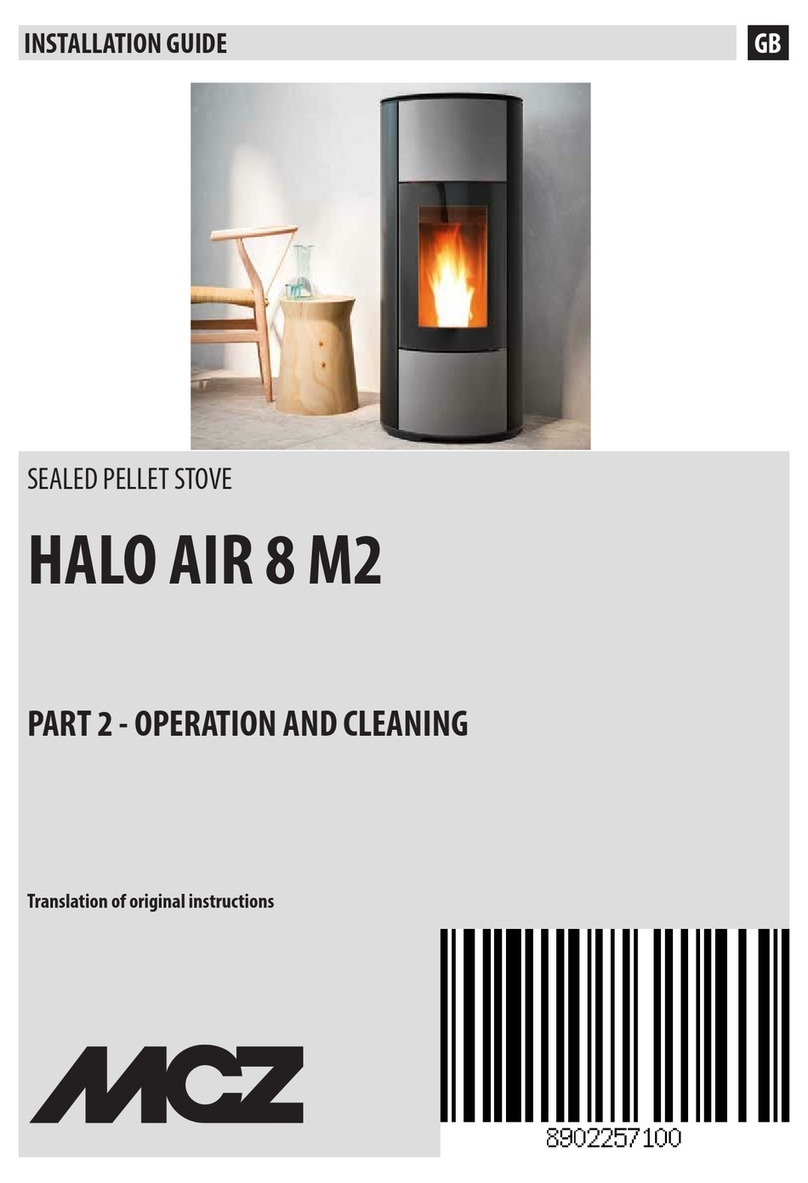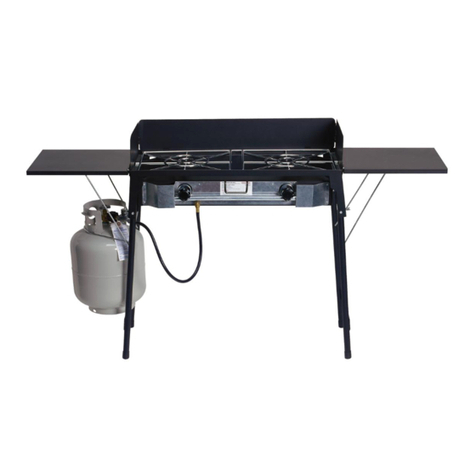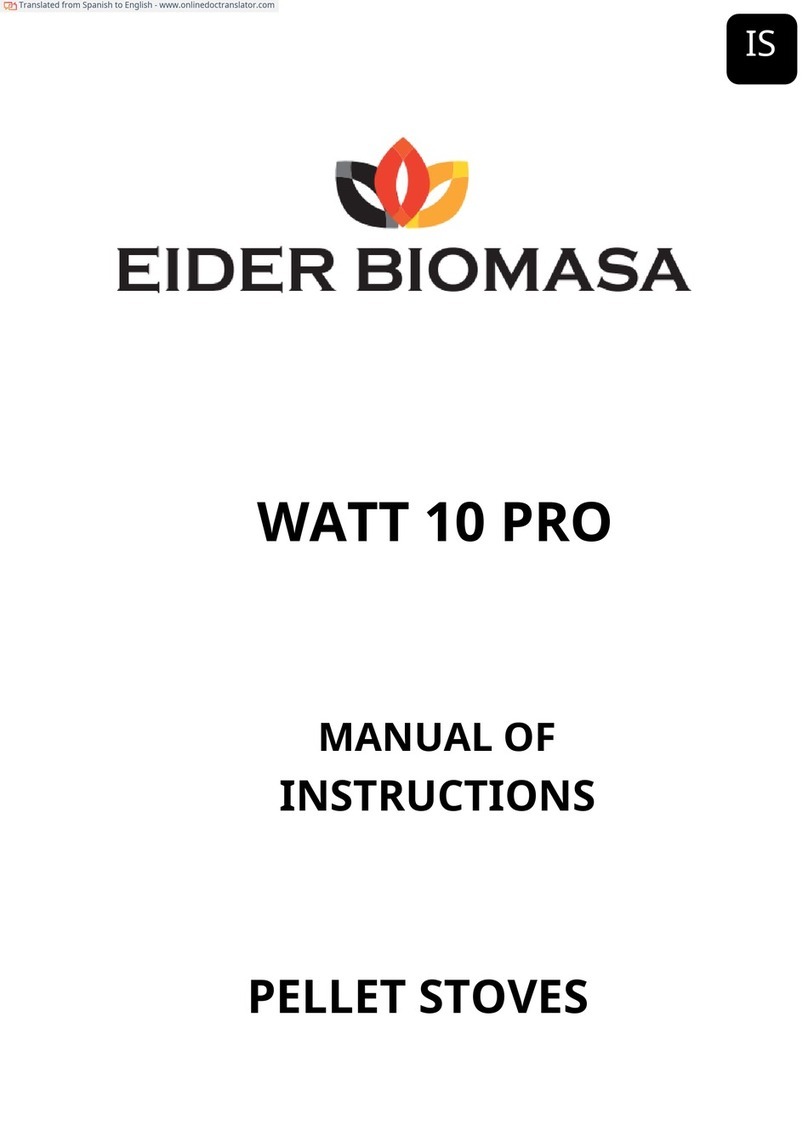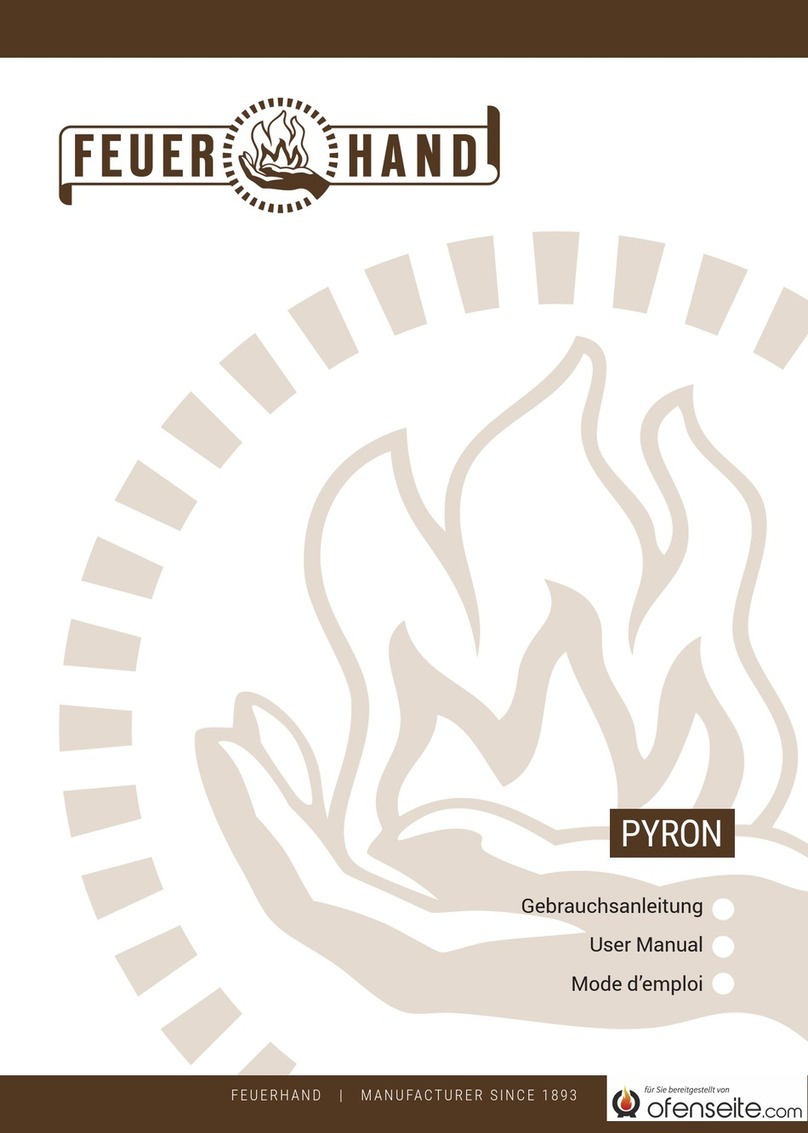
9
until the bottom is free from the rear air plate. Allow the rear of the bae to drop
below the rear air plate, then lower the bae into the rebox. Remove the bae
from the rebox by turning it 90 degrees so it ts through the door. See gure 2.1.
NOTE: Due to shipping weight restrictions, the door glass, rebricks, bae, coal bar,
legs, ue ange, and air-controls ship in a separate box for the Dwarf 5kW.
3. INSTALL THE DOOR HANDLE (if not already installed): For some models,
the door handle is shipped inside of the stove to protect both the handle and the
door from damage in transit. Locate your door handle and remove the outer jam
nut, cam latch, inner jam nut, and lock washer. Open your stove’s door and insert
the threaded end of the spring handle through the door handle hole. First install
the lock washer and then the inner nut on the threaded end of the spring handle,
inside of the door. Tighten the inner jam nut fairly snug against the lock washer.
Turn the door handle back and forth to test the t of the jam nut. Operation
should be smooth with a bit of resistance, not wobbly.
Turn the spring handle to face straight down. Place the cam latch on the threaded
end of the handle inside of the door with the long end protruding past the left
edge of the door. en thread the outer nut against the cam latch. Grasp the door
handle with your right hand, and use your right thumb to press the cam latch
upward to prevent it from turning. Use a crescent wrench in your left hand to
tighten the outer jam nut rmly against the cam latch to lock the handle in place.
Close and latch your stove door to test its t. e door should feel snug against
your stove’s body, not wobbly, and your handle should operate smoothly and easily.
Test several points around your door gasket by closing a dollar bill between the
door and the stove. You should feel some resistance when you pull the bill out.
If the bill cannot be pulled out easily, your door is too tight. If the bill falls out
with no resistance, then your door is not tight enough. If your door needs to be
adjusted, remove the outer jam nut and the cam latch. Tighten the inner jam nut
to tighten the door against the stove body, or loosen it to loosen the door. Install
the cam latch and outer jam nut as before, and retest your door’s t.
If you’d like a video walkthrough, watch our Door Maintenance video at
tinywoodstove.com/videos
Close the door and gently set the stove on its back.






















